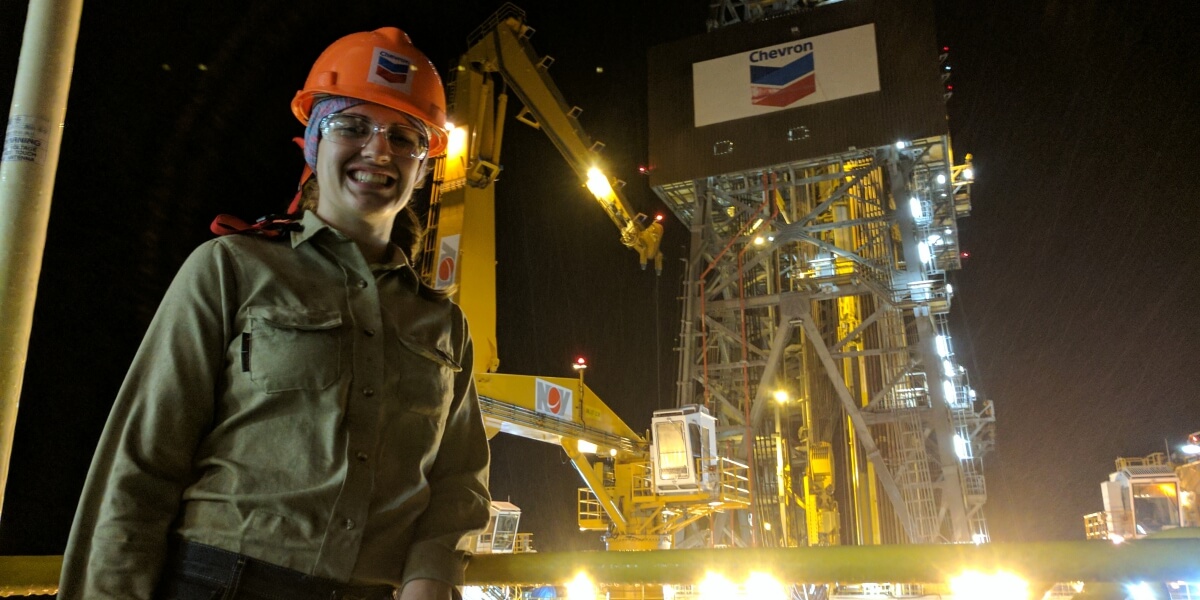
Sophie Pepin, a Chevron intern, first joined the company’s team in the summer of her sophomore year. Courtesy of Sophie Pepin.
Set.
Wait for the horn.
Go.
Sophie Pepin dives for the puck, skidding across the ice on thick skates as she swings her hockey stick low. Her hits are controlled, aiming for a constantly moving target.
Both on and off the ice, this ice hockey athlete and chemical engineering senior always keeps a razor-sharp focus on her ultimate goal, becoming a standout petroleum engineer.
It began with a career class in high school, when Pepin interviewed two oil industry professionals.
“I saw that they were successful, they travelled a lot, and were passionate about their field. I wanted that,” said Pepin.
From the moment she set foot on USC campus, she bounced around between recruiting events and information sessions that featured petroleum companies, networking sessions with the Society of Women Engineers, career conferences, resume workshops and the Viterbi Career Fair.
“By the end of it, these companies had seen me four or five times over several weeks before I got the internship,” she said.
Her freshman year, Pepin landed an internship at Aera Energy where she collected and analyzed data from the oil fields in Bakersfield, CA. Even though she only had the foundational knowledge of engineering from just two semesters of college, she built upon those fundamental skills and applied theories learned in class to real-world data she was presented with.
Confident in her new on-the-job training, Pepin reached out to Professor Iraj Ershaghi, Omar B. Milligan Chair in Petroleum Engineering and director of the USC Petroleum Engineering Program, to propose a research project that focused on improving water injection methods for extracting oil. Ershaghi immediately connected her to Ph.D. student Qianru Qi and graduate student Abdullah Al-Jazzaf, who helped her obtain the data she needed to simulate and improve her new theories and models that would optimize processes she encountered on the field.
“She met with me once a week.” Ershaghi said. “It’s always a tremendous load to take on a research project as an undergrad because their coursework is sometimes 18 or 20 units on top of the research itself, but she never complained or relented.”
“It was definitely a different experience than working with undergrads because Ph.D. students are so invested in their work compared to undergrads, and it was hard to keep up with that level of commitment to the project.” Pepin said, “Qianru definitely pushed me in my work, and I’m glad she did.”
After her models were tested countless times for effectiveness, she presented her research to a regional technical paper contest and won second place. From there, she went on to develop a product based on her model. It also helped open the doors to another internship, this time at Chevron.
“There’s a symbiosis when it comes to internships,” Pepin said. “What you do there helps out what you learn on campus.”
Like scoring in a hockey match, Pepin is always working to make the first leap, to bound across the ice early and get that first swing to become the successful petroleum engineer she always dreams about.
Published on February 7th, 2018
Last updated on February 8th, 2018







